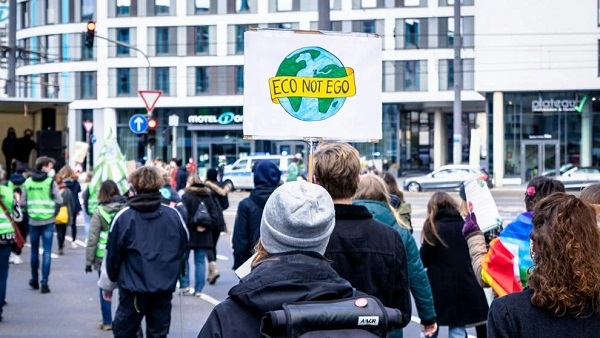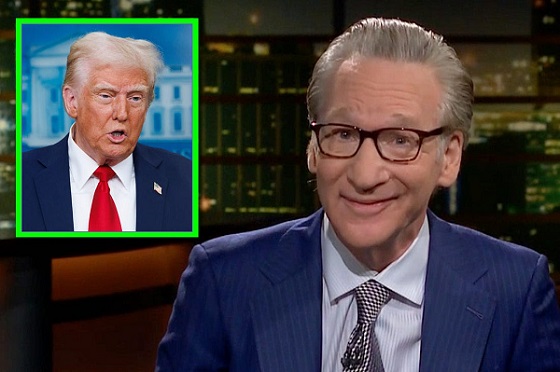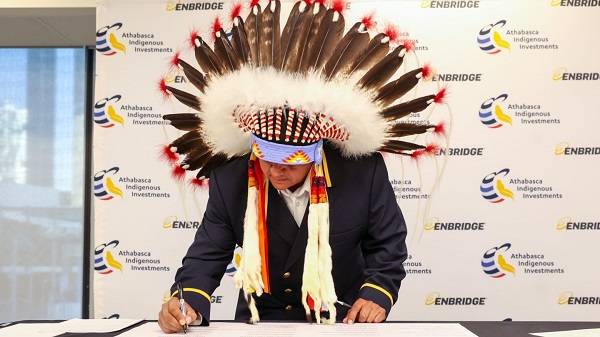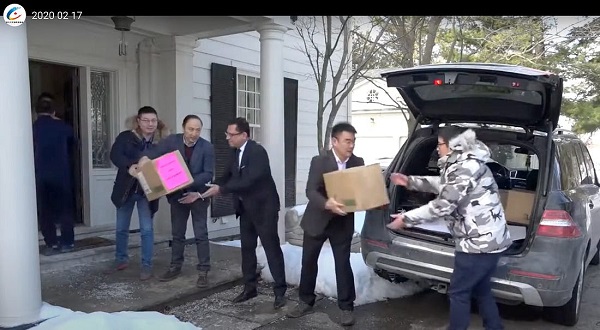Uncategorized
CBSA whistleblower believes transnational gangs have compromised agency databases, helping terrorists, spies and mafias enter Canada
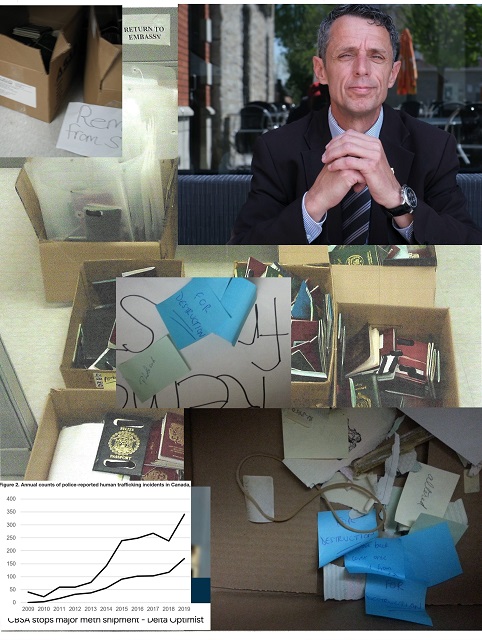
Luc Sabourin, top right, took pictures of boxes of foreign passports he alleges were illegally shredded by CBSA.
News release from The Bureau
|
|

Luc Sabourin wants re-examination of cases including alleged “mass shredding” of foreign passports that included suspects in Canada sought by CBSA
Luc Sabourin, a former CBSA officer, chokes back tears as he recalls the day a man from one of Canada’s most violent crime families — a refugee from Palestine linked to Mexico’s Sinaloa cartel — stood outside Sabourin’s home in Gatineau, Que., and uttered brutal and visceral threats against Sabourin’s children.
Sabourin — a whistleblower who has complained of numerous serious incidents inside Canada Border Services Agency that he believes are due to organized crime infiltration — thinks a particular colleague may have leaked his home address to the drug trafficker, whom Sabourin was scheduled to testify against.
The alleged threats occurred well over ten years ago, and the gangster — whom The Bureau will not identify — has since died in Mexico. However, his close associates continue to endanger North America and are believed to have compromised Canadian and international officials.
Sabourin believes threats to his life and many alleged incidents of harassment against him and other CBSA staff fit into a pattern of corruption and a culture of secrecy across Canada’s government, which effectively silences whistleblowers.
But this isn’t just about government employees who claim to be isolated or railroaded out of Canada’s government, Sabourin says.
It’s about Canada’s security being compromised with stunning breaches that go unaddressed because the system of accountability is broken.
Among many examples that could suggest organized crime has penetrated CBSA systems, Sabourin discloses an especially stunning case.
A CBSA unit learned that a band of armed men clad in combat fatigues appeared to be smuggling illegal migrants across Quebec’s border, which was then covered up internally, Sabourin says, possibly to the benefit of foreign mafias, human traffickers, drug smugglers, or terrorists.
“I asked within the agency via email if there was any reason why the Quebec Provincial Police and the RCMP were not notified about this,” Sabourin told The Bureau. “An hour later, the email disappeared from the generic mailbox and never reached top management.”
These compromises are the reason Sabourin has testified about his experiences in Parliamentary committees and pushed for new whistleblower protection legislation.
In a series of interviews, Sabourin says he has also paid close attention to The Bureau’s reporting on intelligence leaks that detailed China’s election interference, alleged collusion with Canadian MPs and Senators, and the penetration of Canada’s immigration systems in Hong Kong in the 1990s via organized crime.
All of this suggests Canada needs an independent anti-corruption agency to tackle the rot of collusion and ‘insider threats’ linked to criminal and foreign interference networks, Sabourin says, which appear to be spreading through multiple levels of government and various law enforcement agencies.
Sabourin is also calling for a re-examination of what he calls a particularly egregious case in 2015, in which a senior CBSA manager allegedly directed subordinates to illegally destroy hundreds of foreign passports.
Sabourin says he and a co-worker refused to follow the order, which was then carried out by a junior employee, leading to the destruction of passports that, in some cases, according to Sabourin, belonged to serious criminals whom CBSA was trying to locate within Canada for arrest or deportation.
The employee in question also followed directions to falsely report in federal databases that the destroyed passports had been returned to the embassies of the issuing countries, Sabourin alleges.
In interviews, Sabourin reiterates that his internal complaints on this incident — which he documented with photo evidence — were shut down.
So he engaged his Gatineau Liberal MP Greg Fergus, and ultimately former Public Safety Minister Ralph Goodale, along with the office of Prime Minister Justin Trudeau, the RCMP, and the Public Service Integrity Commissioner.
 |
This document shows RCMP’s national division reviewed Luc Sabourin’s allegations but didn’t advance an investigation.
All of this failed to register any changes in Ottawa. And Canada’s vulnerabilities are growing, Sabourin says.
He made this point in an April 2024 letter to Canadian Senators.
“Malicious actors (both local and foreign) have clearly identified the main weaknesses in our current administrative systems and processes, enabling them to operate for long periods with impunity and undetected, until potentially serious damage is done,” Sabourin wrote.
That’s why Sabourin turned to The Bureau for this story, also sitting for a lengthy videotaped examination. [The Bureau Podcast will air Sabourin’s allegations in full tomorrow. CBSA didn’t respond to questions by the deadline for this story; any responses will be included with Sabourin’s video interview.]
“The public don’t understand the jeopardy our country is being placed in by the potential entry of bad actors due to the wrongdoing and inaction of responsible authorities, including Parliament,” Sabourin said.
Broadly, the vulnerabilities he is exposing could gain fresh urgency, because Ottawa will start hearings in August with witnesses from CBSA and Public Safety Canada, to probe how two terror suspects tied to ISIS, and arrested on July 31, were able to enter Canada.
Ahmed Eldidi, 62, and his son, 26-year-old Mostafa Eldidi, were allegedly “in the advanced stages of planning a serious, violent attack in Toronto.”
In interviews Sabourin and Shannon Stinner, the co-worker who refused directions to destroy foreign passports, also said they believe their personal experiences in CBSA speak to broader signs of corruption surfacing in Ottawa in the past few years, such as the ArriveCan scandal.
In that case, an audit found CBSA’s new border entry app was budgeted for $80,000 but ended up costing taxpayers at least $60-million, with indications of collusion among government staff and contractors, and perhaps more ominous actors that have yet to be exposed.
“The system in place, the Public Service Disclosure Protection Act, and the internal disclosure process, are being weaponized by the people in positions of authority in government departments and agencies,” Sabourin said.
“People are in damage control mode, using this to identify what they refer to as ‘problem’ employees, who are actually loyal. For example, consider the ArriveCAN scandal. All the red flags and alerts raised by employees were ignored. When employees engage with internal affairs or professional standards, or meet with the office of disclosure, they get labeled and punished.”
Regarding Sabourin’s sharing his concerns on the mass shredding of foreign passports, which Sabourin believes was illegal, in an interview former CBSA worker Shannon Stinner said he also attended a meeting with Sabourin’s local MP Greg Fergus.
“We told him about the passports, that we weren’t getting anywhere within the agency,” Stinner said. “We told him the steps we took, backed that with paperwork and he just, that was it. After that meeting was done, nothing happened. He didn’t get back to us or anything.”
In response MP Greg Fergus, who is now Speaker of the House of Commons, told The Bureau that Fergus did convey Sabourin’s concerns within Trudeau’s government.
“As the Member of Parliament for Hull-Aylmer, Mr. Fergus considers it his fundamental duty to listen to the concerns of his constituents,” his office stated. “During his meeting with Mr. Sabourin, Mr. Fergus was deeply troubled by the situation described. In response, he brought this matter to the attention of the office of the Minister of Public Safety.”
Lost and Stolen Passports
Sabourin, who handled top secret records for Canada’s National Defence intelligence unit before joining CBSA, was uniquely placed to see gaps in Canada’s systems.
For CBSA, he worked on a small team in a secured room managing the entry of critical information into a federal enforcement database.
When other governments and intelligence agencies informed Canada that batches of international travel documents were lost, stolen, or exploited, and that dangerous people were approaching our borders, Sabourin and his colleagues raced to enter lists of compromised documents so that frontline officers at airports could know who to investigate and who to block.
Worldwide, and inside Canada, the problem of lost and stolen passports has surged since the early 2000s.
There is a massive international market for the exploitation of travel documents that is brokered by Chinese Triads, as The Bureau has reported, among other transnational criminal networks that are believed to include Middle Eastern mafias and terror-financing cells, and Mexican cartels.
Reporting on the trend in 2008, the Canadian Press cited an internal memo from Passport Canada that said “lost and stolen passports are extremely valuable to criminal organizations to facilitate and perpetrate illegal/clandestine operations such as human trafficking, smuggling, money laundering, and terrorism.”
And RUSI, a United Kingdom security think tank, explained how it works in 2007.
“Whereas only the very best forgeries can elude detection, traveling on a stolen passport is extremely difficult to detect,” RUSI reported. “Those with stolen documentation are usually only given away by a mistake when the passport was being filled out or if the passport has been listed in a database of stolen papers.”
Carefully guarding how much he can reveal about sensitive intelligence, in interviews Sabourin says for some reason, the number of exploited travel records spiked exponentially after Russia invaded Ukraine in 2014.
During this period, from 2006 to 2015, as the international problem of lost and stolen travel documents grew, Sabourin says he started to notice documents going missing from his desk, within his secure unit.
Not only did records go missing, he says, but critical identity documents were also altered, and sometimes shredded.
And he began to suspect a particular co-worker, who reportedly had previously dealt with elements of organized crime, Sabourin says.
There were also several incidents, Sabourin says, when he was urgently entering large lists of compromised international passports that had gone missing in foreign states. And these large volumes of critical passport information went missing from his desk.
“As far as I am concerned someone did that to buy time for these individuals to travel to whatever destination these people were heading to,” Sabourin said. (A suspected co-worker) was seen entering my cubicle and the cubicles of others in my unit many times without justifications. And on each occasion items of operational value were damaged or sabotaged, passports under investigative process or for enforcement went missing. And some were never to be recovered.”
These concerning incidents culminated with an egregious case in 2015, Sabourin says, when he and Shannon Stinner were directed to destroy an estimated 1,000 foreign passports.
CBSA holds numerous foreign travel documents and is legally bound to return such documents to foreign embassies, Sabourin and Stinner told The Bureau.
When a student employee at CBSA undertook the mass shredding task, they destroyed about 300 passports before Sabourin’s complaint halted the process, he says.
He took pictures from within his secure unit of boxes of passports that the junior employee was in the process of destroying, Sabourin says, and provided the alleged evidence to The Bureau.
 |
A redacted Government of Canada document shows that Sabourin reported allegations that CBSA shredded foreign passports, and Sabourin says he was targeted by management for refusing the task.
Sabourin says that from the shredded passports, he was able to recover about 50 that retained their cover sheaths, and by checking barcode information, he verified some of the owners had “wanted by CBSA notifications” on file, some had deportation orders in force, and some were suspected of serious criminality.
“This mass shredding would have assisted countless wanted criminals by destroying intelligence and evidence against them,” Sabourin said.
And guardedly, he hints at the most dire consequences.
“Let’s say that in a few years from now, another scenario like September 11 happens in Canada. And I’m being careful with my words. And eventually, these people are either arrested or identified. And it comes back that these people were those in the passports that we were looking for and [documents that were destroyed] had the last known picture of them.”
Asked by The Bureau what could have possibly motivated this alleged national security breach, Sabourin says its hard to say, but he can’t rule out a coverup of some sort.
“I don’t know the general intent, but it would definitely have assisted either organized crime or individuals that are involved in criminality or foreign actors,” Sabourin said. “Because, like I explained to the members of Parliament in my testimony, those were people that were wanted by CBSA. We didn’t know their whereabouts in Canada. And the order was totally against every rule and policies that we had in place. I had never seen this in eight years doing that work. It was urgent. We were told that this needed to be done, now.”
In numerous interviews with The Bureau, Sabourin presented his case with conviction and details, supporting his allegations with documents that prove he reported the mass shredding incident and other alleged corruption to numerous Canadian enforcement and political bodies.
And still, in isolation, his claims which suggest serious transnational crime has repeatedly penetrated CBSA’s systems and potentially corrupted employees, are not only jarring but sometimes incredible.
But the incidents Sabourin describes could plausibly fit into the threat brief prepared by CBSA in 2019 for the new Liberal Public Safety Minister Bill Blair.
The documents warned of “growing evidence of transnational criminal organizations seeking to exploit CBSA systems, processes and personnel and employing increasingly sophisticated concealment methods.”
Not only are transnational mafias seeking to corrupt CBSA officers, the brief said, but the systems exploited appear to match the circumstances that Sabourin described to The Bureau.
Specific vulnerabilities included CBSA computer systems conducting data processing, the brief says.
It adds that record-keeping, communications, telecommunications, account inventory and account management are also targeted by organized crime, and this is increasing threats to Canadians from “smuggling, counterfeit goods, human trafficking, money laundering and proceeds of crime.”
Sabourin’s former co-worker Shannon Stinner, in an interview, says he agrees with Sabourin that corruption and organized crime is likely behind the occurrences both men witnessed in CBSA.
And it all points to broader problems in Ottawa.
“I mean there’s a lot of little stories that have come out, whether it’s in news reports, or within question period in Parliament, that backs up stuff that Luc and I have been saying,” Stinner said. “It’s not just our little bit. There’s more to it, because there’s other people have been coming forward with the same thing, from different parts of the government.”
The Bureau is a reader-supported publication. To receive new posts and support my work, consider becoming a free or paid subscriber.
Uncategorized
Poilievre on 2025 Election Interference – Carney sill hasn’t fired Liberal MP in Chinese election interference scandal

From Conservative Party Communications
“Yes. He must be disqualified. I find it incredible that Mark Carney would allow someone to run for his party that called for a Canadian citizen to be handed over to a foreign government on a bounty, a foreign government that would almost certainly execute that Canadian citizen.
“Think about that for a second. We have a Liberal MP saying that a Canadian citizen should be handed over to a foreign dictatorship to get a bounty so that that citizen could be murdered. And Mark Carney says he should stay on as a candidate. What does that say about whether Mark Carney would protect Canadians?
“Mark Carney is deeply conflicted. Just in November, he went to Beijing and secured a quarter-billion-dollar loan for his company from a state-owned Chinese bank. He’s deeply compromised, and he will never stand up for Canada against any foreign regime. It is another reason why Mr. Carney must show us all his assets, all the money he owes, all the money that his companies owe to foreign hostile regimes. And this story might not be entirely the story of the bounty, and a Liberal MP calling for a Canadian to be handed over for execution to a foreign government might not be something that the everyday Canadian can relate to because it’s so outrageous. But I ask you this, if Mark Carney would allow his Liberal MP to make a comment like this, when would he ever protect Canada or Canadians against foreign hostility?
“He has never put Canada first, and that’s why we cannot have a fourth Liberal term. After the Lost Liberal Decade, our country is a playground for foreign interference. Our economy is weaker than ever before. Our people more divided. We need a change to put Canada first with a new government that will stand up for the security and economy of our citizens and take back control of our destiny. Let’s bring it home.”
Uncategorized
Canada Needs A Real Plan To Compete Globally

From the Frontier Centre for Public Policy
Ottawa’s ideological policies have left Canada vulnerable. Strategic action is needed now
As Canada navigates an increasingly complex geopolitical landscape, the next federal government must move beyond reflexive anti—Americanism regardless of its political leanings. Instead, Canada should prioritize national interests while avoiding unnecessary conflict and subservience.
The notion that Canada can stand alone is as misguided as the idea that it is only an economic appendage of the United States. Both perspectives have influenced policy in Ottawa at different times, leading to mistakes.
Rather than engaging in futile name-calling or trade disputes, Canada must take strategic steps to reinforce its autonomy. This approach requires a pragmatic view rooted in Realpolitik—recognizing global realities, mitigating risks, governing for the whole country, and seizing opportunities while abandoning failed ideologies.
However, if Washington continues to pursue protectionist measures, Canada must find effective ways to counteract the weakened position Ottawa has placed the country in over the past decade.
One key strategy is diversifying trade relationships, notably by expanding economic ties with emerging markets such as India and Southeast Asia. This will require repairing Canada’s strained relationship with India and regaining political respect in China.
Unlike past Liberal trade missions, which often prioritized ideological talking points over substance, Canada must negotiate deals that protect domestic industries rather than turning summits into platforms for moral posturing.
A more effective approach would be strengthening partnerships with countries that value Canadian resources instead of vilifying them under misguided environmental policies. Expand LNG exports to Europe and Asia and leverage Canada’s critical minerals sector to establish reciprocal supply chains with non-Western economies, reducing economic reliance on the U.S.
Decades of complacency have left Canada vulnerable to American influence over its resource sector. Foreign-funded environmental groups have weakened domestic energy production, handing U.S. industries a strategic advantage. Ottawa must counter this by ensuring Canadian energy is developed at home rather than allowing suppressed domestic production to benefit foreign competitors.
Likewise, a robust industrial policy—prioritizing mining, manufacturing, and agricultural resilience—could reduce dependence on U.S. and Chinese imports. This does not mean adopting European-style subsidies but rather eliminating excessive regulations that make Canadian businesses uncompetitive, including costly domestic carbon tariffs.
Another key vulnerability is Canada’s growing military dependence on the U.S. through NORAD and NATO. While alliances are essential, decades of underfunding and neglect have turned the Canadian Armed Forces into little more than a symbolic force. Canada must learn self-reliance and commit to serious investment in defence.
Increasing defence spending—not to meet NATO targets but to build deterrence—is essential. Ottawa must reform its outdated procurement processes and develop a domestic defence manufacturing base, reducing reliance on foreign arms deals.
Canada’s vast Arctic is also at risk. Without continued investment in northern sovereignty, Ottawa may find itself locked out of its own backyard by more assertive global powers.
For too long, Canada has relied on an economic model that prioritizes federal redistribution over wealth creation and productivity. A competitive tax regime—one that attracts investment instead of punishing success—is essential.
A capital gains tax hike might satisfy activists in Toronto, but it does little to attract investments and encourage economic growth. Likewise, Ottawa must abandon ideological green policies that threaten agri-food production, whether by overregulating farmers or ranchers. At the same time, it must address inefficiencies in supply management once and for all. Canada must be able to feed a growing world without unnecessary bureaucratic obstacles.
Ottawa must also create an environment where businesses can innovate and grow without excessive regulatory burdens. This includes eliminating interprovincial trade barriers that stifle commerce.
Similarly, Canada’s tech sector, long hindered by predatory regulations, should be freed from excessive government interference. Instead of suffocating innovation with compliance mandates, Ottawa should focus on deregulation while implementing stronger security measures for foreign tech firms operating in Canada.
Perhaps Ottawa’s greatest mistake is its knee-jerk reactions to American policies, made without a coherent long-term strategy. Performative trade disputes with Washington and symbolic grandstanding in multilateral organizations do little to advance Canada’s interests.
Instead of reacting emotionally, Canada must take proactive steps to secure its economic, resource, and defence future. That is the role of a responsible government.
History’s best strategists understood that one should never fight an opponent’s war but instead dictate the terms of engagement. Canada’s future does not depend on reacting to Washington’s policies—these are calculated strategies, not whims. Instead, Canada’s success will be determined by its ability to act in the interests of citizens in all regions of the country, and seeing the world as it is rather than how ideological narratives wish it to be.
Marco Navarro-Génie is the vice president of research at the Frontier Centre for Public Policy. With Barry Cooper, he is co-author of Canada’s COVID: The Story of a Pandemic Moral Panic (2023).
-

 espionage2 days ago
espionage2 days agoEx-NYPD Cop Jailed in Beijing’s Transnational Repatriation Plot, Canada Remains Soft Target
-

 Business2 days ago
Business2 days agoDOGE Is Ending The ‘Eternal Life’ Of Government
-

 2025 Federal Election2 days ago
2025 Federal Election2 days agoCanada drops retaliatory tariffs on automakers, pauses other tariffs
-

 2025 Federal Election2 days ago
2025 Federal Election2 days agoTucker Carlson Interviews Maxime Bernier: Trump’s Tariffs, Mass Immigration, and the Oncoming Canadian Revolution
-

 2025 Federal Election2 days ago
2025 Federal Election2 days agoBREAKING from THE BUREAU: Pro-Beijing Group That Pushed Erin O’Toole’s Exit Warns Chinese Canadians to “Vote Carefully”
-

 Daily Caller1 day ago
Daily Caller1 day agoTrump Executive Orders ensure ‘Beautiful Clean’ Affordable Coal will continue to bolster US energy grid
-

 Daily Caller1 day ago
Daily Caller1 day agoDOJ Releases Dossier Of Deported Maryland Man’s Alleged MS-13 Gang Ties
-

 2025 Federal Election1 day ago
2025 Federal Election1 day agoAllegations of ethical misconduct by the Prime Minister and Government of Canada during the current federal election campaign






